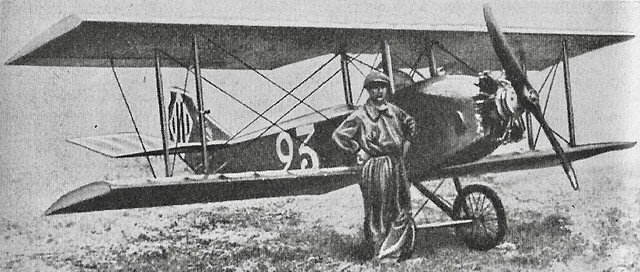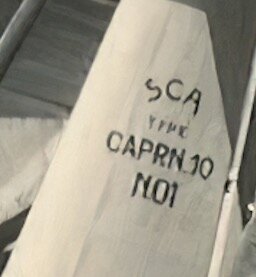richard B
ACCESS: Secret
- Joined
- 17 August 2006
- Messages
- 343
- Reaction score
- 498
Yes , the French Huttmann and the German HüttmannOK my dear Richard,but certainly it was two Huttmann ?.
Yes , the French Huttmann and the German HüttmannOK my dear Richard,but certainly it was two Huttmann ?.
From TU 170,
here is a helicopter,designed by Mr. Henry Bergier in 1937.
Yes , the French Huttmann and the German HüttmannOK my dear Richard,but certainly it was two Huttmann ?.
Looks like sone generic pondering about glide bomb, liquid-fuel meteorological rockets, and radio-controlled flying bombs.From Ailes 11 January 1940,
what was this ?.
From Ailes 11 January 1940,
what was this ?.
General journospeak about gliding bombs' possibilities and stability issues.From Ailes 11 January 1940,
what was this ?.
Many thanks my dear Jemiba,From Ailes 11 January 1940,
what was this ?.
Judging the first part of that article, nothing from France.
"AFTER the giant seaplane with sixteen machine guns, the stratospheric rocket and the magnetic mine,
it is suggested that the Germans have another technical surprise in the form of a gliding bomb."
What comes then, seems to be the introduction of such weapons from other contries.
Of course, it would be interesting to know, which giant (German) seaplane/flying boat was meant at the very beginning
of the year 1940. Magnetic mines were well known then, but the (German) stratospheric rocket ? The A5 ("Aggregat 5"),
tested from 1938 onwards ?
https://gallica.bnf.fr/ark:/12148/bpt6k9607206m/f1.image.r=Gateu?rk=85837;2From TU 207,
Mr. Leon Gateu designed a tourist Biplane in 1924,powered by one 25 hp Salmson engine,and also
created a two-seat Monoplane in 1930,powered by one 45 hp engine,the later maybe remained a
Project only ?.

Pineau-Phalempin Ultra & Trimotor were a ultra-light and three engined Projects of 1923
Pineau-Phalempin Ultra & Trimotor were a ultra-light and three engined Projects of 1923
Here is anther airplane for them powered by 300 hp engine,was it a Fighter or military aircraft ?.


The registration F-AROR
I think that I was slightly mistaken when I posted the above information. I think that what we'd discussed elsewhere was the S.C.A.M. rather than the S.C.A.. The former was the Société des Constructions Aéronautiques du Maine, based at Pont-de-Braye in the Sarthe Département (although one might have expected it to be based in Maine-et-Loire). Has it been established whether the latter was the Société Commerciale Aeronautique? Judging by the little information that I've found online, the Société Commerciale Aeronautique (including those companies that use this name with a geographical suffix) seems to be far more recently established rather than dating back to the 1930s. Thus I wonder whether the S.C.A. and the S.C.A.M. might have been one and the same enterprise? Unfortunately none of my books contain reference to either and the online references are few and scant in content. Can anyone else shed light on this?As for S.C.A., I think that we've discussed this elsewhere before and, whilst I can't presently find that discussion, my memory tells me that the company built aeroplanes for third parties.
Yes, that's exactly what I said in my prepenultimate post. If you know any more than that, about this specific entreprise, I shall be grateful if you'll provide details.
Still mystery ?.
My dear Burunduk, I post them in reply # 91.May be, someone just posted it.
In Les Ailes # 659 1934 p. 5 there was an article "Les resultats des concours d'avions et de moteurs" and three interest projects-winners were described
Is anything known about the second, low wing S.M.A.L. monoplane (mentioned in the 1946 advertisement), beyond it being a single seater and powered by a 35hp motor?
From TU 288,
need translate.
hey community, a little trouvaille from 1923, name : M. CH . HALLEY
This concept make smore sense than the next dozen flying saucer proposals. Just use centrifugal compressor(s) to blow air outwards across (chord-wise) an air-foil shaped ring.From TU 170,
here is a helicopter,designed by Mr. Henry Bergier in 1937.
Bergier Annular lift-generating device 1930,
in 1930 Henri-Eugène-Philippe Bergier patented this machine announced as « self-lifting ». It was based on the « principle of the kite » where the kite cellulas, reduced to aircraft wings (A) were lifted by the air stream generated by contra-rotating turbines (E-F).
Modelstories: analyses de maquettes d'avions.
Modelstories, avions & maquettes. Modelstories, kits & planesmodelarchives.free.fr
That diamond-shaped fuselage reminds us of Lobet Ganagobie. Ganagobie went through several iterations - mostly to accommodate heavier engines. Chris Falconar even sold Ganagobie plans.The Gaston Sablé / Société Mayennaise d'Aviation Légère/S.M.A.L 1937 :
View attachment 674980
View attachment 674981
The S.M.A.L built 2 planes :
They both get through WW II , and monsieur Sablé tried to sell them after the war :
I think we have to look on the side of autogyre like La CiervaFrom Pegase 2007,
what was this ?.
This Onera report shows another Bazoin design of 1937 called Whesham said:Hi,
from Les Ailes journal,the designer Pierre Bazoin created two aircraft projects,the
first was tourist aircraft with inverse "M" shape,and the second was a six-engined
huge transatlantic flying boat in a weird configuration.
http://gallica.bnf.fr/ark:/12148/bpt6k6560495x/f7.image
Some details: 110 tons, 80 m wingspan, total power 15600 CV
So that is something like 2560 hp per prop! So probably three engines each?
